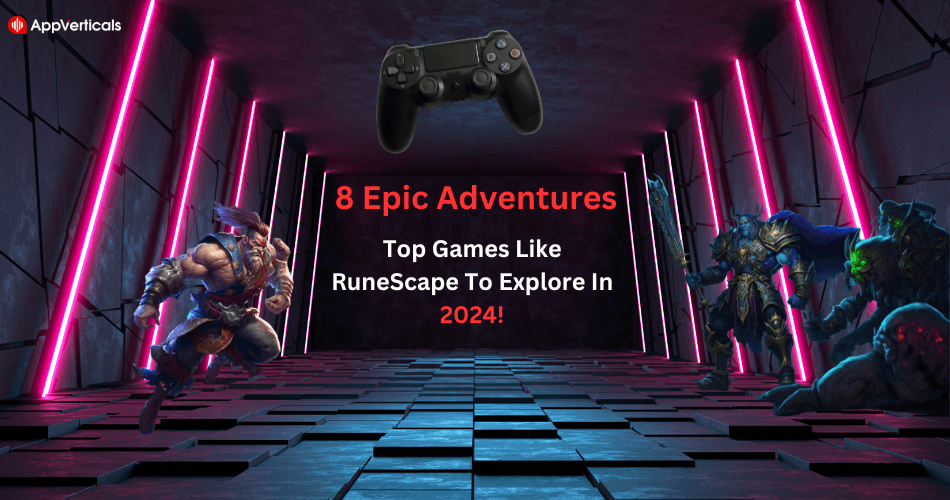Innovation knows no bounds, and app investors are looking for the next big thing! Whether you’re a seasoned app developer in Dallas or an aspiring tech investor, this is the era where the digital world converges with real-life solutions.
App investors are playing a pivotal role in shaping this dynamic ecosystem. The potential is immense, but the choices can be overwhelming. What trends are worth working on? How can you ensure you get a good investment for your mobile app?
You may have explored various app funding blogs to get the most out of it. But don’t worry! We’ll explore the ideas with endless possibilities that lie ahead.
Let’s discover!
Understanding the Mobile App Investment Landscape in 2023
App investors are keenly interested in apps that leverage AI for personalization, automation, and enhanced user experiences. Whether it’s predictive analytics, natural language processing, or computer vision, AI-powered apps are capturing the attention and funds of investors looking to ride the wave of innovation. Let’s have a look at the most attention-grabbing app types that can attract app investors:
Sustainability and Eco-Friendly Apps
Statista survey showed that the worldwide green technology and sustainability market is estimated to reach 62 billion US dollars by 2030, with a compound annual growth rate of 20.8% from 2023 to 2030.
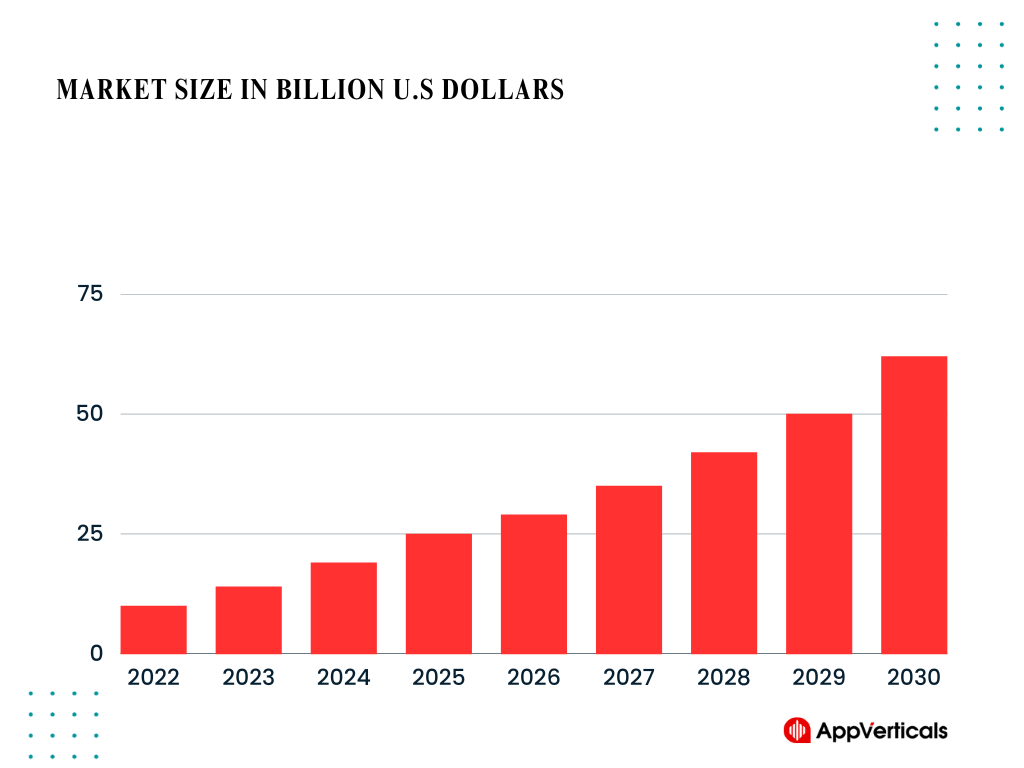
From reducing energy consumption to waste reduction and sustainable shopping, sustainability apps guide how individuals can contribute to a greener planet. If you’re passionate about sustainability, consider creating an app that offers actionable tips and resources to help users adopt more sustainable lifestyles. App investors are eager to support apps encouraging responsible consumption, reducing carbon footprints, and fostering eco-friendly habits.
Crafting Your Ideal Mobile App/Experience Starts Here!
Ready to elevate your business? Your custom app is just a click away.
Yes Let’s goWhy Sustainability and Eco-Friendly Apps Matter!
- Sustainability apps offer practical tips and information for eco-friendly living.
- Apps that promote eco-conscious shopping connect users with sustainable and ethically sourced products, helping consumers make environmentally responsible choices while supporting eco-friendly brands.
- These apps allow users to calculate and track their carbon footprint and provide valuable insights into individual contributions to climate change. They motivate users to reduce their emissions by making informed choices.
- Apps that provide information on renewable energy sources, solar panel installation, and energy-saving tips empower users to choose sustainable energy.
Healthcare and Wellness Apps
The global health crisis has amplified the demand for digital health solutions. Investors seek innovative healthcare and wellness apps that address various needs, from telemedicine and mental health support to fitness and nutrition tracking.
According to a survey in the US, UK, and France:
Respondents planned to use mobile fitness and health applications in 2023 to interact more with friends and family. Accessing fitness material and exercises was the second most common reason mobile users planned to use health apps, with 30% of users in France saying that they planned to use health apps for this sort of content.
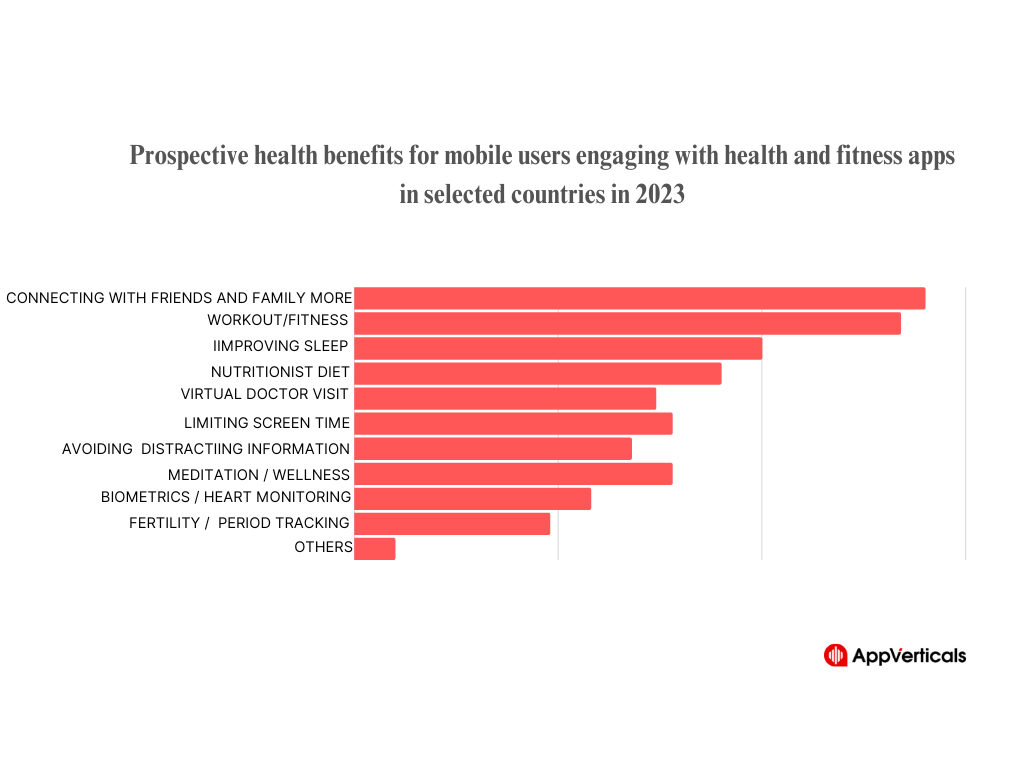
Fitness apps like Fitbit offer workout plans, step tracking, and dietary guidance. They motivate users to lead healthier lifestyles through gamification and goal-setting. Moreover, mental health apps like Calm provide meditation, mindfulness, and relaxation techniques. They help users manage stress and improve their mental well-being. If you have expertise in healthcare or wellness, explore opportunities to create apps that bridge gaps in the industry and connect with investors focused on improving healthcare outcomes.
Why Healthcare and Wellness Apps Matter
- Healthcare apps enable users to consult doctors, receive medical advice, and access health information conveniently, eliminating geographical barriers.
- Wellness apps offer personalized health and fitness plans, helping users set and achieve their health goals.
- Mental health apps offer resources for stress management, meditation, and therapy.
Educational and EdTech Apps
The e-learning industry is expected to reach about USD 400 billion by 2026.
Education has gone digital, and investors are eager to support apps that facilitate learning and skill development. EdTech apps are thriving, offering solutions for remote learning, upskilling, and personalized education experiences. Investors recognize the long-term potential of these apps, making them a promising investment option.
Educational and EdTech apps stand at the forefront of the educational technology revolution, reshaping learning and knowledge. They cater to diverse educational needs, from K-12 and higher education to lifelong learning and professional development.
These apps are not just tools; they represent a revolution in acquiring knowledge. Online learning platforms like Coursera offer courses, including those from top universities. They provide certification and degree programs accessible to learners worldwide.
Language learning apps like Duolingo offer interactive language courses. They use gamification and multimedia to engage learners and enhance language proficiency. Skill development apps like Skillshare offer courses on various skills, from coding and graphic design to leadership and marketing. If you’re passionate about education, consider developing an EdTech app that addresses specific learning needs and explore opportunities to secure funding from investors who value education innovation.
Why Educational and EdTech Apps Matter
- Educational apps provide access to quality learning resources and expert instruction, making education accessible.
- EdTech apps adapt to individual progress, providing tailored content, practice exercises, and assessments to suit each learner’s pace and style.
- Lifelong learning apps empower individuals to acquire new skills, stay competitive in the job market, and pursue their passions.
NFT and Blockchain Apps
The number of users in the NFT market is estimated to reach 19.31 million by 2027. The world of non-fungible tokens (NFTs) and blockchain technology is experiencing explosive growth.
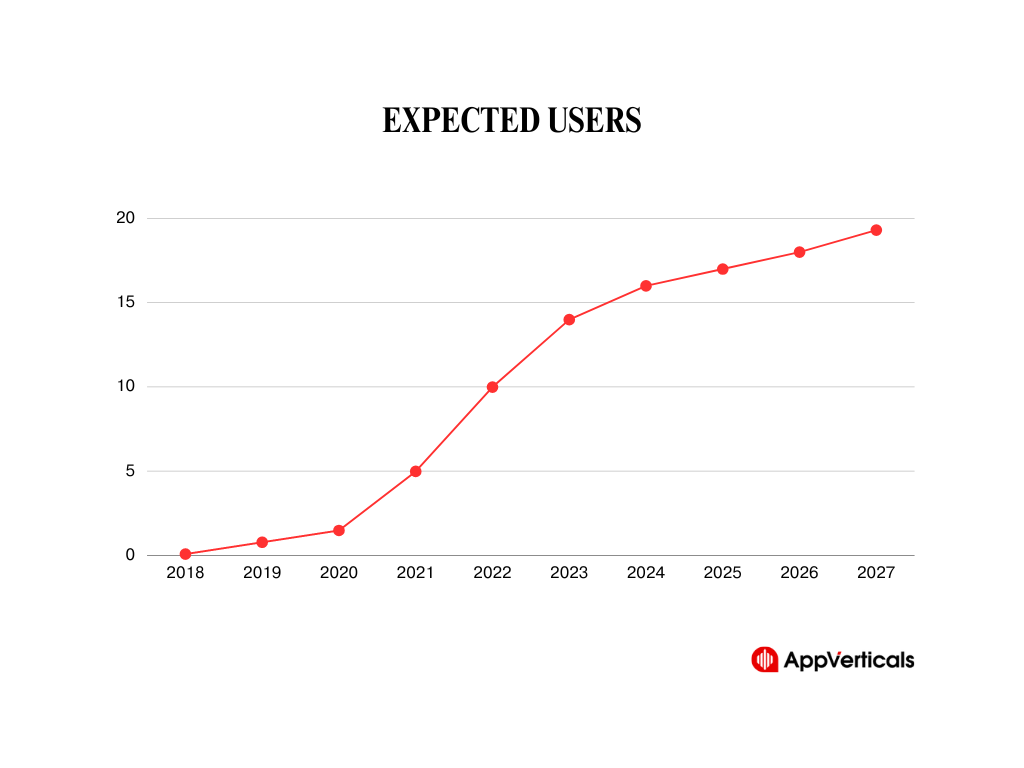
Investors are keeping a close eye on apps that explore the potential of blockchain for various industries, from art and gaming to supply chain and finance. NFT marketplaces and blockchain-based solutions are attracting substantial investment. NFT marketplaces like OpenSea allow creators to mint and sell NFTs, while collectors can buy, sell, and trade these digital assets. These platforms have grown exponentially, with artworks selling for millions of dollars.
Blockchain apps have penetrated the gaming industry, enabling players to own and trade in-game assets as NFTs. Virtual real estate, too, is a booming sector, with blockchain apps facilitating the buying and selling of virtual land. According to the Blockchain Council, musicians and entertainers are using NFTs to tokenize their music, videos, and exclusive experiences. This creates direct connections with fans and new revenue streams.
If you’re well-versed in blockchain technology, consider developing an NFT or blockchain app that disrupts traditional industries and seek out investors interested in blockchain innovation.
Why NFT and Blockchain Apps Matter
- NFTs allow creators to mint and sell digital assets, such as art, music, and collectibles, as unique tokens on the blockchain. Buyers gain indisputable proof of ownership and authenticity.
- Blockchain apps record every transaction, providing a complete history of an asset’s ownership. This is invaluable for verifying authenticity, especially in art and collectibles.
- Blockchain apps utilize smart contracts, self-executing agreements with the terms of the contract directly written into code. These contracts automate processes, such as royalty payments to creators when NFTs are resold, enhancing trust and efficiency.
If you have a groundbreaking AI-based app idea equipped with latest mobile app development technologies, now is the time to start developing a solid business plan and prototype to attract potential investors.
Crafting Your Ideal Mobile App/Experience Starts Here!
Ready to elevate your business? Your custom app is just a click away.
Yes Let’s goCrafting a Compelling Business Plan for Your Mobile App
Launching a successful mobile app with result-oriented mobile app development strategies also requires a well-thought-out business plan that serves as your roadmap to success. Now, walk through the key elements of crafting a compelling business plan for your mobile app development funding venture.
A business plan articulates your vision, strategies, and goals. A compelling business plan comprises several key components:
Executive Summary
Summarize your app concept, target audience, unique selling proposition, and the problem it solves clearly and compellingly. Nail down your elevator pitch – a brief, captivating description of your app that you can use to spark interest in potential stakeholders.
Market Research and Analysis
Analyze the current market conditions, identify competitors, and understand your target audience’s needs and preferences. Monitor market trends and adapt your app’s features to meet changing user demands.
Target Audience
Define your ideal users, create user personas, and outline their pain points and preferences. Conduct surveys and gather feedback to refine your understanding of your target audience.
Monetization Strategy
Outline your app’s revenue model, whether it’s through ads, in-app purchases, subscriptions, or a combination. Provide financial projections and ROI estimates.
Regularly analyze your app’s monetization strategy to optimize revenue streams.
Marketing and Promotion
Detail your marketing and user acquisition strategies. Include a budget for advertising, social media campaigns, content marketing, and partnerships. Leverage social media, influencer marketing, and app store optimization (ASO) to boost your app’s visibility.
Development and Design
Describe the technical requirements, development timeline, and the team responsible for building the app. Highlight the key features and design elements. Collaborate closely with your development team to ensure the app aligns with your vision.
Testing and Quality Assurance
Explain your testing and QA processes to ensure the app functions flawlessly. Detail how you’ll handle user feedback and bug fixes post-launch. Conduct thorough beta testing with real users to catch any overlooked issues.
Launch and Distribution
Outline your app’s launch plan, including the app store(s) you’ll target, launch date, and promotional activities. Ensure your app meets app store guidelines. Create a buzz around your app’s launch through teasers, previews, and pre-registration campaigns.
Post-Launch Support and Updates
Discuss how you’ll provide customer support, gather user feedback, and release updates to enhance your app’s functionality and address any issues. Actively engage with your users through app reviews, feedback forms, and community forums.
Financial Projections and Funding Needs
Present a financial forecast, including revenue projections, expenses, and funding requirements. Regularly update your financial projections as your app gains traction and evolves.
Risk Assessment and Mitigation
Identify potential risks and challenges that could impact your app’s success. Develop strategies to mitigate these risks. Stay adaptable and be ready to pivot if unexpected challenges arise.
Developing a Prototype for Your Mobile Application
Creating a prototype involves a series of steps that guide you from concept to reality:
Define Objectives
Clearly define the objectives of your prototype. What do you want to achieve with it? Is it for user testing, investor pitches, or internal team alignment? Set clear goals and objectives for your prototype project.
Sketch the User Interface (UI)
Create low-fidelity sketches or wireframes of your app’s screens and user interface. Focus on the layout and functionality. Start sketching the basic design of your app’s screens on paper or digitally.
Build a Clickable Prototype
Transform your sketches into a clickable prototype using prototyping tools like InVision. This interactive model allows users to navigate through your app. Invest time in learning and using a prototyping tool to bring your sketches to life.
Test and Iterate
Gather feedback from potential users or stakeholders. Pay attention to usability, navigation, and overall user experience. Make necessary iterations. Act on the feedback received and refine your prototype iteratively.
Add Visual Design
Incorporate visual design elements, including colors, fonts, and graphics, to make your prototype visually appealing and representative of your app’s final look. Consider hiring a designer or using design tools to enhance the visual appeal.
Showcase to Stakeholders
Present your prototype to critical stakeholders, such as investors or decision-makers, to gain buy-in and support for your app project. Prepare a compelling presentation to showcase your prototype’s potential.
Why to Prototype your App?
Prototyping is more than just a formality; it’s a crucial phase in the product development journey. Here’s why it matters:
Visualizing Ideas
A prototype transforms your app concept from abstract ideas into a tangible form. It allows you to see how your app will function and flow. Begin by visualizing your app concept and its core features.
Gathering Feedback
It provides a platform for gathering feedback from stakeholders, potential users, and developers. Early input can save time and resources down the road. Share your prototype with trusted individuals for constructive feedback.
Reducing Risks
A prototype helps identify flaws or usability issues in the app’s design or user experience. This minimizes the risk of costly mistakes during development. Use your prototype to pinpoint and address potential challenges.
Networking and Pitching Your Idea: Keys to Entrepreneurial Success!
Crafting a compelling pitch requires a structured approach and persuasive skills:
Know Your Audience
Tailor your pitch to your audience’s interests and needs, whether it’s investors, developers, or potential users. Research your audience to understand their priorities and pain points.
Highlight Unique Selling Points
Clearly articulate what sets your app apart from the competition and why it’s valuable to users. Identify your app’s unique selling points and emphasize them in your pitch.
Visual Aids
Utilize visual aids such as mock-ups, wireframes, or concept art to illustrate your app’s potential. Create visual materials that enhance your pitch’s impact.
Practice and Refine
Practice your pitch until it flows smoothly and confidently. Be open to refining it based on feedback. Seek opportunities to practice your pitch in front of peers or mentors.
Strategies for Networking
Effective networking involves deliberate strategies that can expand your reach and impact:
Define Your Goals
Clearly define your networking objectives. Are you seeking investors, technical collaborators, or industry insights? Set specific networking goals to guide your efforts.
Online Presence
Leverage social media platforms and professional networks like LinkedIn to connect with like-minded individuals in the industry. Optimize your online profiles to showcase your expertise and interests.
Attend Industry Events
Participate in conferences, meetups, and webinars related to mobile app development to meet potential contacts. Explore upcoming industry events and register for those that align with your goals.
Elevator Pitch
Develop a concise and compelling elevator pitch for your app idea that you can confidently deliver in various networking scenarios. Craft an engaging elevator pitch that captures the essence of your app in under a minute.
Why Are Networking and Pitching Essential?
Networking and pitching are not mere activities but essential components of your entrepreneurial toolkit. Here’s why they matter:
Access to Resources
Networking connects you with potential partners, collaborators, and mentors who can provide valuable insights, funding, and technical expertise. Start building your network by attending industry events and joining relevant online communities.
Validation and Feedback
Pitching your idea allows you to receive feedback and validation from experts and potential users, helping you refine your concept and identify potential pitfalls. Be open to constructive feedback and use it to improve your app idea.
Support and Collaboration
Networking can lead to fruitful collaborations and partnerships that can accelerate the development and promotion of your app. Seek opportunities for collaboration with professionals who share your vision.
How to Get Funding for an App? Your Path to Financial Support!
Funding is the lifeblood of many businesses, and understanding its importance is paramount. In the United States, just 35% of startup apps survive over ten years. This makes understanding how to acquire funding for an app even more vital for app developers.
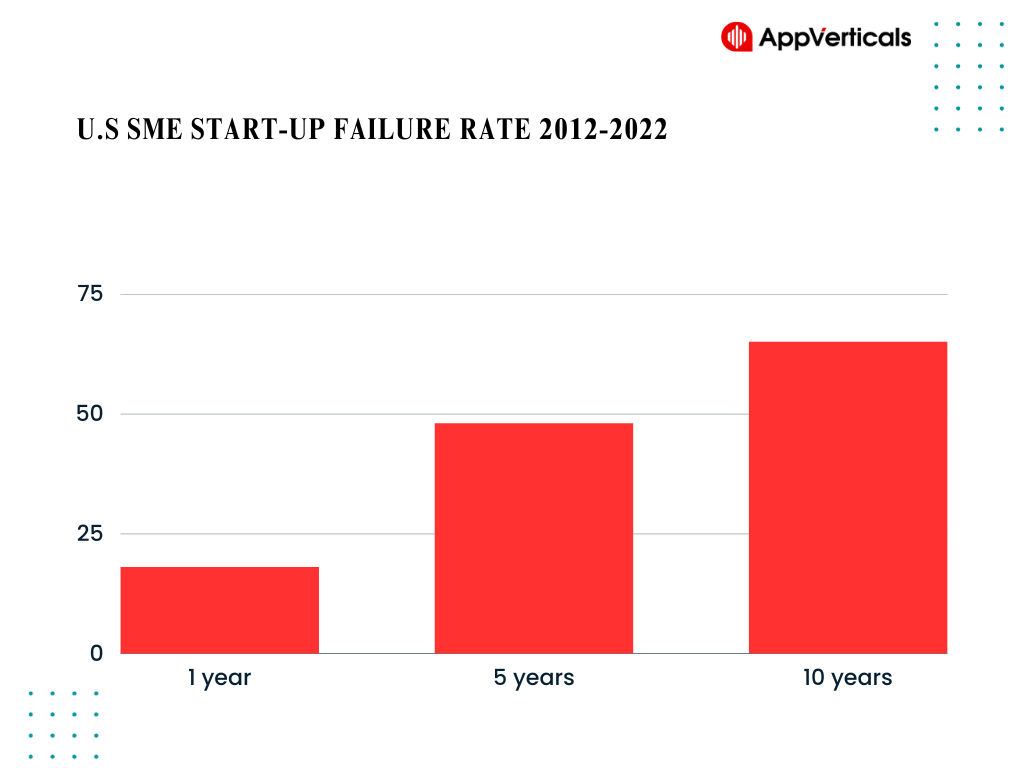
Regarding mobile app funding, securing the proper financing is often the key that unlocks the doors to innovation and success. Various funding options are available, each with its unique characteristics and considerations:
Bootstrapping
Use your savings or revenue generated from your existing business to fund your app development. Assess your financial situation and consider bootstrapping if viable.
Angel Investors
Seek funding from individual investors who provide capital in exchange for equity or convertible debt. Build a compelling pitch and network with potential angel investors.
Venture Capital
Approach venture capital firms for significant investment in exchange for equity. Research venture capital firms aligned with your industry and app concept.
Crowdfunding
It includes raising funds from many people, often through platforms like Kickstarter or Indiegogo. Prepare a compelling crowdfunding campaign, complete with rewards for backers.
Bank Loans
It includes exploring traditional bank loans or lines of credit to finance your app development. Review your creditworthiness and assess loan options from financial institutions.
Grants and Competitions
Another good option is participating in app development contests or applying for grants from organizations supporting innovation. Identify relevant competitions and grant opportunities in your niche.
App Monetization
It includes generating revenue through in-app advertisements, subscriptions, or one-time purchases. Plan your app monetization strategy early in the development process.
Strategic Partnerships
Another option is collaborating with established companies that can provide funding, expertise, or resources in exchange for a stake in your app’s success. Identify potential partners and create proposals for collaboration.
What Convenience Can Mobile App Investors Deliver?
Resource Allocation
Funding allows you to allocate resources for app development, including hiring talent, acquiring technology, and covering operational costs. Create a budget that outlines your resource needs at each stage of development.
Quality and Innovation
Adequate funding enables you to invest in quality development, innovation, and user experience enhancements. Prioritize quality and innovation in your app development strategy.
Marketing and User Acquisition
Funding supports marketing efforts and user acquisition, which is essential for your app’s visibility and success in a crowded marketplace. Develop a marketing plan that aligns with your budget and objectives.
Bottom Line!
The future of mobile apps holds tremendous promise and potential. Tech investors have an exciting array of opportunities to explore and fund. THE POSSIBILITIES ARE VAST, from NFT and Blockchain apps redefining digital ownership to EdTech and wellness apps transforming learning and healthcare.
Consider collaborating with the top mobile app development company to get the best-performance app to attract more investors. Their expertise and experience can help you navigate this evolving landscape and make your investment a success story.
If you want a groundbreaking app, AppVerticals is ready to serve you. Take advantage of the chance to participate in this exciting journey, and your next step is toward funding the future of mobile app innovation.




